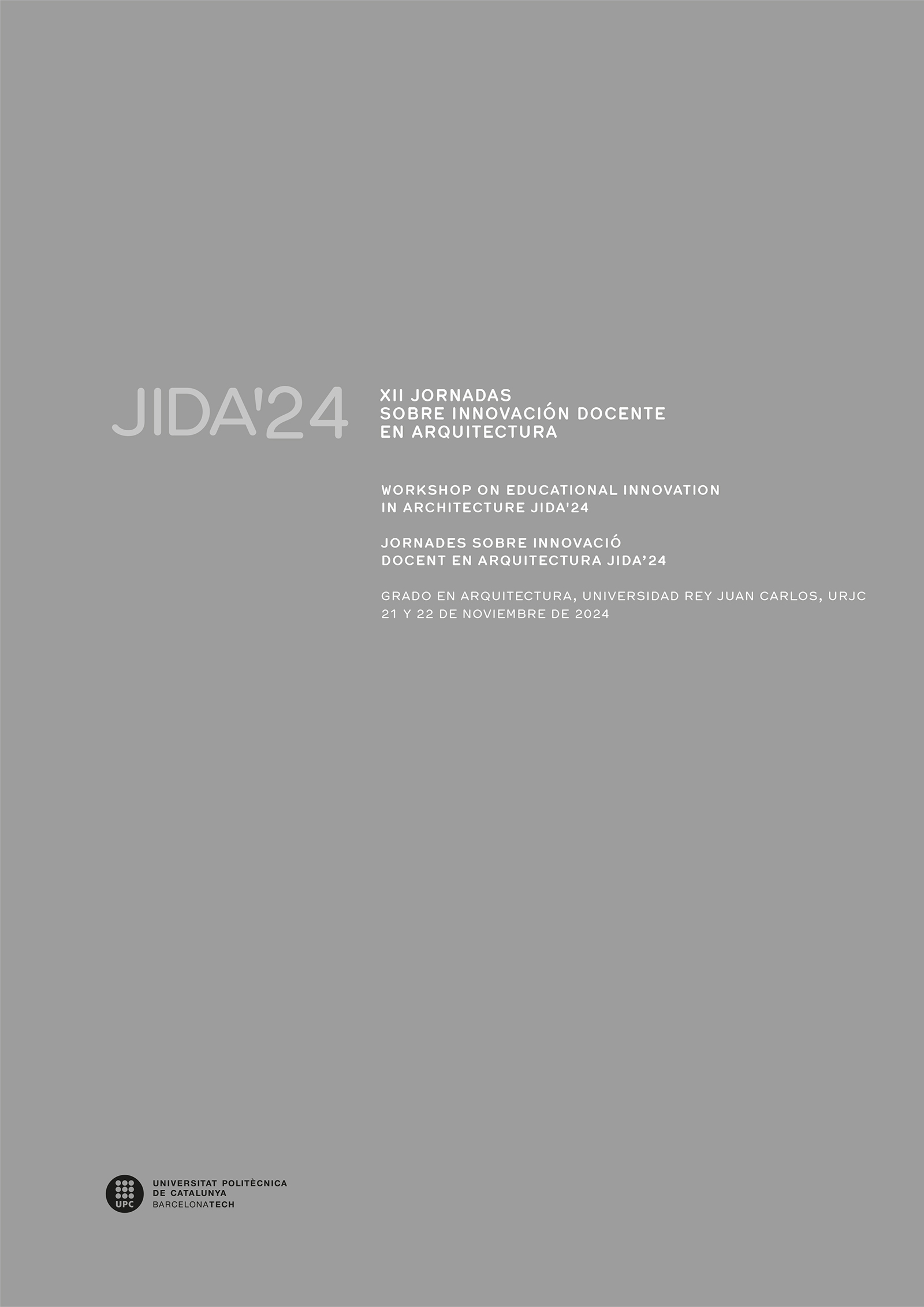Physical-digital registration of the territory: inmesirve architectural initiation experience
DOI:
https://doi.org/10.5821/jida.2024.13269Keywords:
analog-digital, virtual reality, phygital, real scale, trial-errorAbstract
Some questions that teachers have when planning a field trip: What happens if a student cannot go to that architectural experience? What happens if the planned time was not enough to record, measure, observe what the teachers request from the territory? And finally, hoy to verify that the information recorded in the territory is reliable to bring it to the classroom? A little explored space is observed regarding field trips, new ways of acquiring and verifying information in a more vivid way that allows an approach to the experience of measuring and recording the territory in a more holistic and immersive way. The incorporation of experiences of extended realities offering a complete vision, in terms of registration, route and measurement. Bringing the student´'s distance closer to the territory as many times as necessary to find the requested information, also to verify what has been done on the ground.
References
Alvarez, Luis. «Arquitectura y fenomenología. Sobre la arquitectónica “indeterminación” en el espacio». Eikasía, 2013, pp. 815-836.
Bardí Milà, Berta, Daniel García-Escudero y Carlos Labarta. 2019. «El aprendizaje de la arquitectura». Revista ZARCH n12, pp 2-7. https://doi.org/10.26754/ojs_zarch/zarch.2019123387
Bates, Donald; Mitsogiani, Vivian y Ramírez-Lovering, Diego. 2015. Studio Futures. Changing trajectories in architectural education. 1ª ed. Melbourne: URO.
Colección JIDA (Textos de Arquitectura, Docencia e Innovación). https://upcommons.upc.edu/handle/2117/97028
Galleguillos-Negroni, Valentina [et al.]. 2022. «Inteligencia colaborativa y realidad extendida: nuevas estrategias de visualización». A: Garcia Escudero, Daniel; Bardí Milà, Berta, eds. X Jornadas sobre Innovación Docente en Arquitectura (JIDA'22), Escuela Técnica Superior de Arquitectura de Reus, 17 y 18 de noviembre de 2022: libro de actas. Barcelona: UPC IDP; GILDA, pp. 378-39.
Galleguillos-Negroni, Valentina [et al.]. 2023. «Muro Virtual como herramienta de aprendizaje para la enseñanza colaborativa de un taller de Arquitectura». A: Bardí Milà, Berta; Garcia Escudero, Daniel, eds. XI Jornadas sobre Innovación Docente en Arquitectura (JIDA'23), Escuela Técnica Superior de Arquitectura de Granada, 16 y 17 de noviembre de 2023: libro de actas. Barcelona: UPC IDP, pp. 686-698.
García-Escudero, Daniel y Bardí Milà, Berta. 2019. «Conversación con Eva Franch i Gilabert: la pedagogía como espacio de experimentación», ZARCH (12), 200-209. https://doi.org/10.26754/ojs_zarch/zarch.2019123580
García-Peñalvo FJ, Corell A. 2020. «La COVID-19: ¿enzima de la transformación digital de la docencia o reflejo de una crisis metodológica y competencial en la educación superior?». Campus Virtuales, 9 (2): pp 83-98.
Goycoolea, Roberto. 2017. Nuevas tecnologías y enseñanza de la Arquitectura.
Masdeu, Marta. 2018. La transformación del taller de arquitectura en nuevos espacios de aprendizaje. Tesis Doctoral. Universidad de Girona.
Méndez González, Patricia; Barría Chateau, Hernán (ed.). 2016. Enseñanza de la Arquitectura en América del Sur. Escuelas y Facultades de Arquitectura Públicas de ARQUISUR. Concepción: Imprenta Diario Sur.
Murphy MPA. 2020. «COVID-19 and emergency eLearning: Consequences of the securitization of higher education for post-pandemick pedagogy». Contemporary Security Policy, 41 (3): 492-505. https://doi.org/10.1080/13523260.2020.1761749
Stake, Robert E. 2010. Investigación Cualitativa: El estudio de cómo funcionan las cosas. New York: The Guilford Press.
Susskind, R. y Susskind, D. 2016. El futuro de las profesiones: cómo la tecnología transformará el trabajo de los expertos humanos. Teel editorial, 333 págs.






















